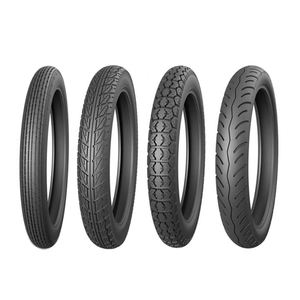Unknown Facts About Motorcycle Boots
Unknown Facts About Motorcycle Boots
Blog Article
About Motorcycle Boots
Table of ContentsMotorcycle Boots Things To Know Before You Get ThisNot known Facts About Motorcycle BootsWhat Does Motorcycle Boots Do?Rumored Buzz on Motorcycle Boots4 Simple Techniques For Motorcycle BootsAll about Motorcycle Boots
Motorbike parts and systems for a motorbike are crafted, produced, and constructed in order to create motorbike versions with the preferred performance, aesthetics, and expense. The crucial components of modern-day motorcycles are offered listed below. The framework of a motorbike consists of the framework and suspension, together with the front forks, of the car.Carbon fibre, titanium, and magnesium are utilized in a few really costly personalized structures. The frame includes the head tube that holds the front fork - motorcycle boots and enables it to pivot. Some bikes consist of the engine as a load-bearing stressed participant; this has been used all with motorcycle background however is now becoming more typical.
It was widely undesirable and typically considered a negative concept at the time. Today it is a used on some "thumpers" (single-cylinder four-strokes) that usually have dry-sump lubrication needing an outside oil storage tank. It has actually since gained some cachet in the contemporary custom bike globe too due to the space cost savings it can afford and the reference to an earlier era.
Though any type of storage space tank for gas might be so called, the term is typically put on part of an engine system in which the fuel is stored and pushed (gas pump) or launched (pressurized gas) into an engine. A bike fork is the portion of a bike that holds the front wheel and enables one to steer.
The Main Principles Of Motorcycle Boots
The mix of rake and path figures out just how steady the motorcycle is. motorcycle boots. The 'fork' on a motorcycle includes several components. The triple trees (additionally referred to as yokes) hold the fork tubes (which consist of the fork springs), and are attached to the neck of the framework by the guiding stem.

, which calls for both lubrication and modification for elongation (stretch) that happens through wear. The lubricant is subject to being thrown off the fast-moving chain and results in gunk and dirt build-up. Chains do deteriorate, and excessive wear on the front and rear gears can be unsafe.
Conventional roller chain-drives experience the potential for vibration, as the efficient radius of action in a chain and sprocket mix frequently alters during the transformation ("chordal activity"). If a drive sprocket turns at constant RPM, after that the chain (and the driven sprocket) should accelerate and decelerate regularly. The majority of chain-driven bikes are fitted with a rubber bushed rear wheel hub to remove this vibration problem.
These chain oilers vary in sophistication, however all include dramatically to the life of the chain. The custom-made this website of lubing by immersing the chain in a tin of warm oil ceased in the early 1970s, when most chains had rubber "O'-rings. The original Suzuki RE5 of 1975 featured a back chain oiler, yet the 1976 model had a sealed chain, and its oiler was erased as "unnecessary".
The Ultimate Guide To Motorcycle Boots
They are not as resilient when subjected to high horse power as a chain. You can not change the size and adjustment final drive ratios as conveniently as chains. And call for larger pulley-blocks compared to chain gears to get a reliable last drive ratio.
A shaft-drive is normally totally confined; the visual sign is a tube prolonging from the rear of the transmission to a bell real estate on the back wheel. Inside the bell housing a bevel gear on the shaft mates with another on the wheel mount. This setup transcends in terms of noise and cleanliness and is practically maintenance-free, with the exemption of occasional fluid adjustments.
The additional equipment sets are a resource of power loss and included weight. Virtually all high-performance racing bikes utilize chain-drive since they are the most mechanically reliable transmitting power to the rear wheel.

The 2-Minute Rule for Motorcycle Boots
The most essential characteristic of any kind of tire is the call spot, the useful link small area that is in call with the roadway surface area while riding. There are tires developed for dust bikes, touring, sport and cruiser bikes. Motorcycle tires have knobbly, deep treads for maximum grasp on loose dirt, mud, or crushed rock; such tires often tend to be less secure and noisier on paved surface areas.
Exploring tires are usually made of a harder rubber compound for better durability, these may last much longer however have a tendency page to give less outright grasp contrasted to sports tires at optimum operating temperature levels. Visiting tires typically supply more hold at reduced temperature levels and can be extra suited to riding in cool or winter problems where a sport tire might never ever reach its optimum operating temperature level.
These have a tendency to have stronger sidewalls as they are generally fitted to larger machines. Motorsport or competing tires use the greatest of degrees of grip. Due to the heats at which these tires typically operate, make use of outside a racing atmosphere is risky, generally these tires do not reach their optimal temperature level which offers less than optimum grasp.
Motorcycle Boots for Beginners

This can lead to brake dive. Brakes can either be drum or disc based, with disc brakes being a lot more typical on huge, modern-day or more expensive bikes for their far exceptional quiting power, specifically in damp problems. There are several brake-performance-enhancing aftermarket parts available for a lot of motorbikes, including brake pads of varying substances and steel-braided brake lines.
Report this page